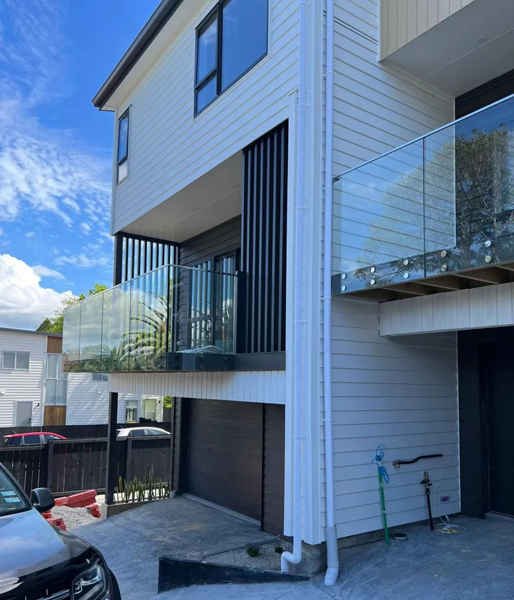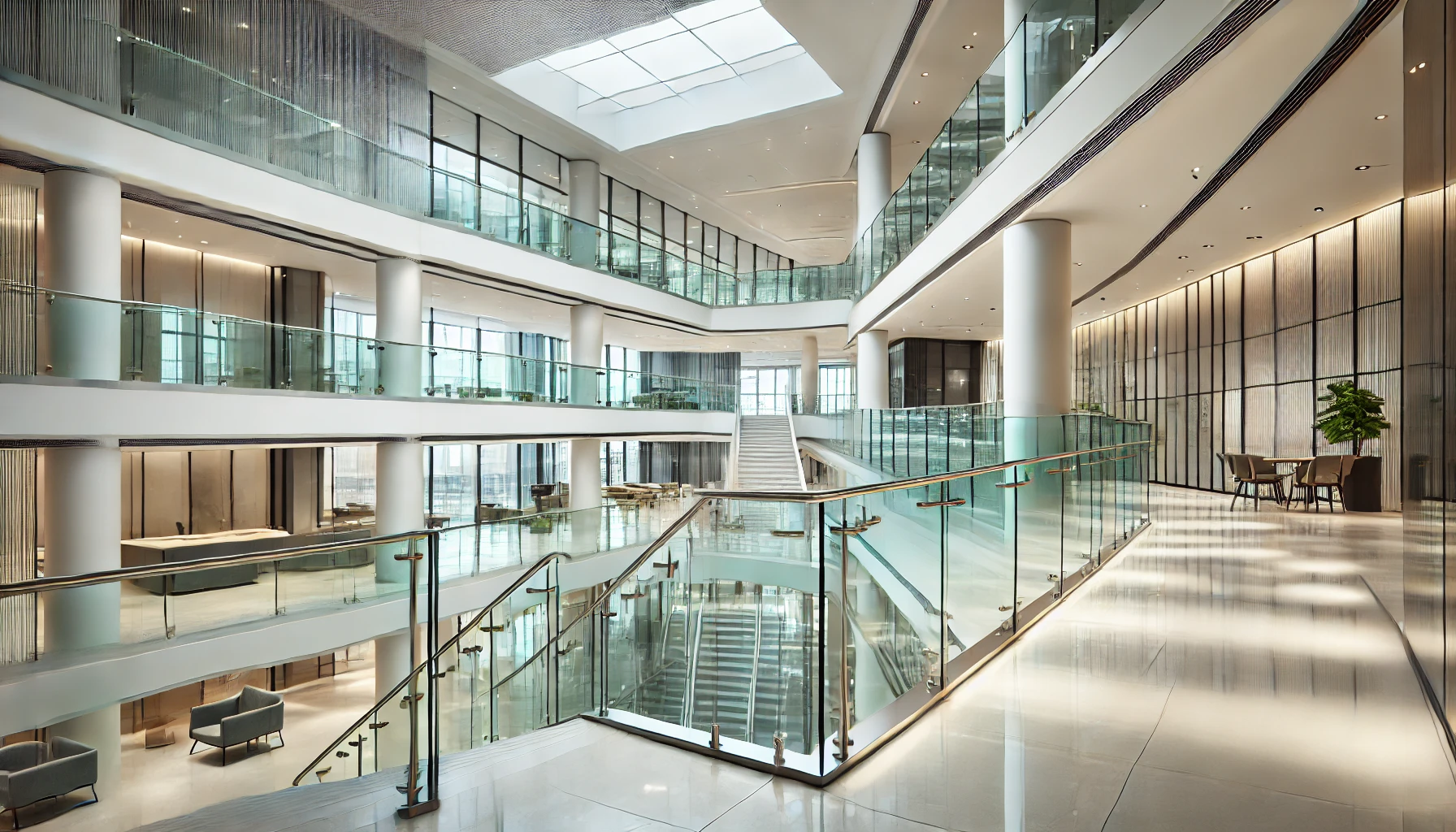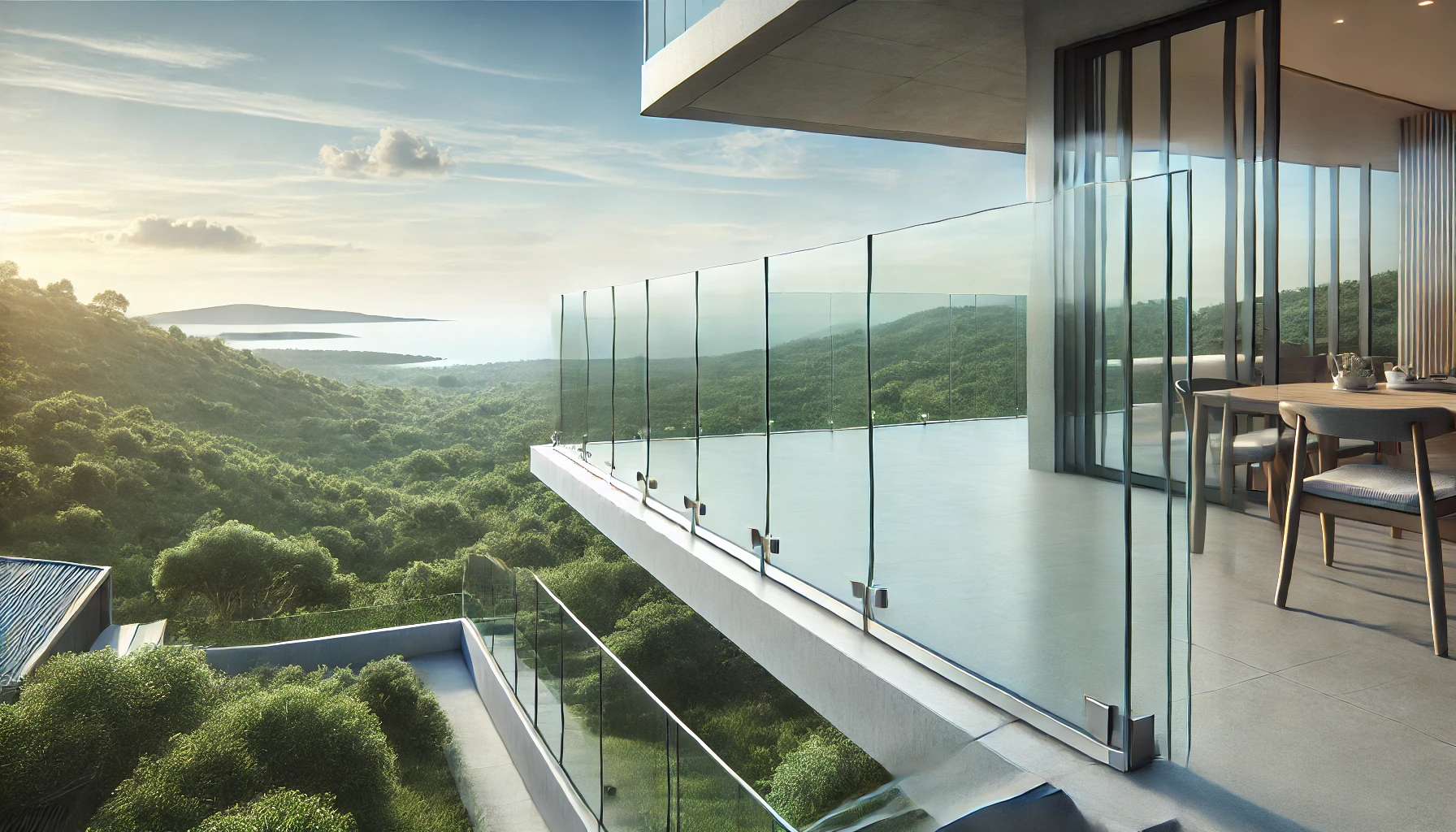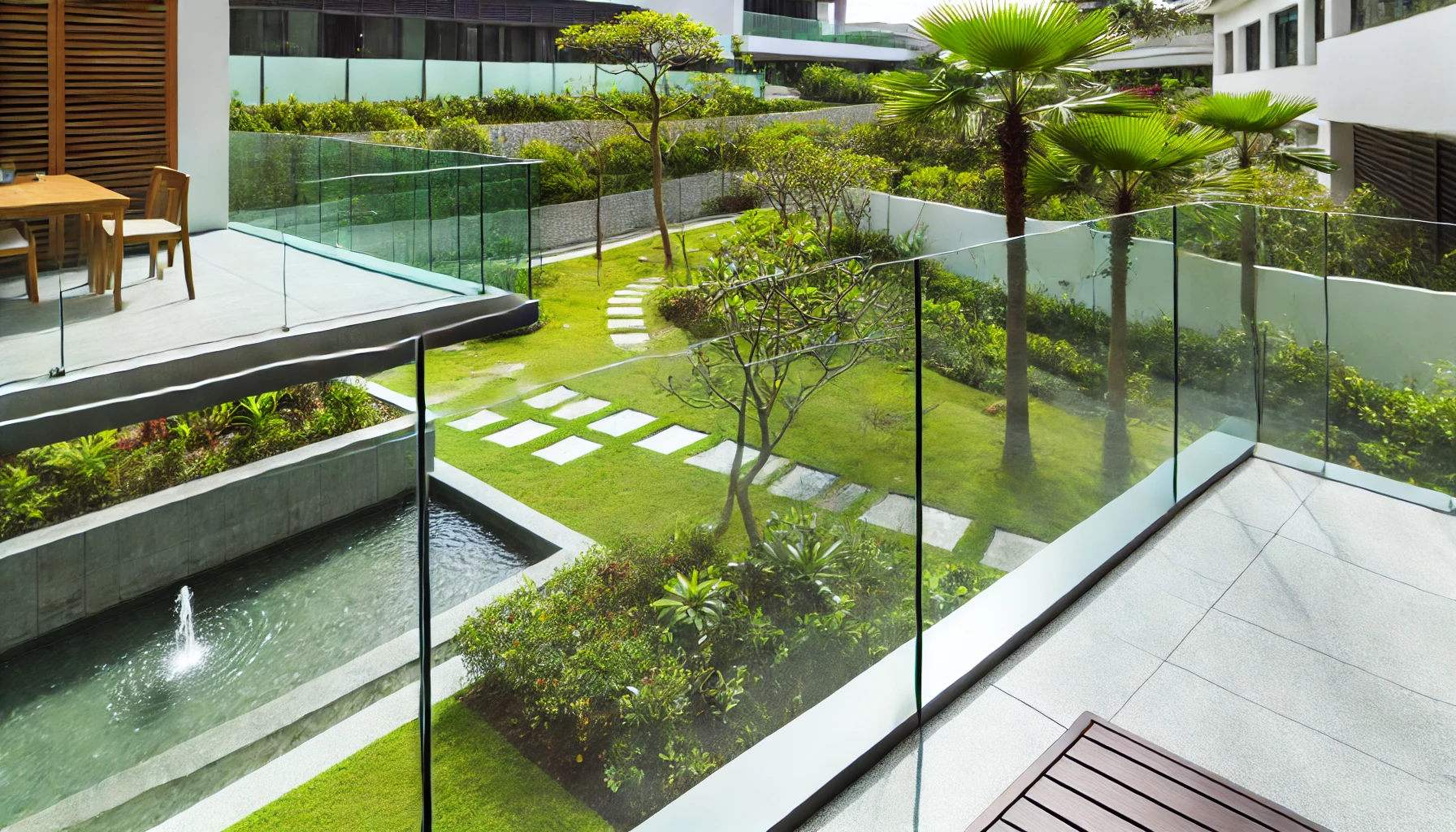Glass railings have become a staple in modern architecture, offering both aesthetic appeal and practical safety solutions for residential, commercial, and public spaces. The transparency and sleek design of glass railings make them ideal for creating open spaces, maximizing views, and adding a touch of elegance to any structure. However, the most crucial element in glass railings is, unsurprisingly, the glass itself. Understanding the different types of glass, their safety features, and how they contribute to the overall structure of a railing system is key to selecting the right glass for your project.
1. Types of Glass Used in Glass Railings
The choice of glass used in a railing system is fundamental. Different types of glass offer varying levels of safety, durability, and aesthetic qualities. The most commonly used glass types in glass railing systems include:
a. Tempered Glass
Tempered glass, also known as toughened glass, is the most popular choice for glass railing systems due to its high strength and safety properties. It is produced by heating standard glass to extreme temperatures and then rapidly cooling it, which strengthens the glass and makes it four to five times stronger than regular annealed glass.
One of the most important characteristics of tempered glass is how it breaks. Unlike standard glass, which shatters into large, sharp shards, tempered glass breaks into small, blunt pieces. This minimizes the risk of injury in case the glass is broken, making it ideal for high-traffic areas like balconies, stairs, and decks.
b. Laminated Glass
Laminated glass is another excellent option for glass railings, especially when additional safety and noise reduction are needed. Laminated glass consists of two or more layers of glass that are bonded together with an interlayer, typically made of polyvinyl butyral (PVB) or ethylene-vinyl acetate (EVA). This interlayer holds the glass together even when broken, preventing it from shattering into dangerous pieces.
Laminated glass is often chosen for glass railing systems in high-rise buildings or public spaces where safety is a top priority. Additionally, it offers soundproofing qualities and can block UV rays, making it suitable for both outdoor and indoor applications.
c. Annealed Glass
Annealed glass is standard glass that has been slowly cooled to relieve internal stresses. While it is less expensive than tempered or laminated glass, it is not commonly used in glass railings due to its low strength and safety concerns. Annealed glass shatters into sharp, dangerous shards, which can pose significant injury risks. However, it may still be used in certain situations, often as a base material for further treatment like tempering or lamination.
2. Safety Considerations in Glass Selection
Safety is the paramount concern when choosing glass for railing systems. The primary role of a glass railing is to prevent people from falling, so the glass must be strong enough to withstand pressure and impact.
a. Building Codes and Regulations
Different regions have strict building codes and regulations concerning the use of glass in railing systems. These codes dictate the minimum strength requirements, thickness, and installation methods for glass railings. For example, many building codes require the use of tempered or laminated glass that is at least 10 to 12mm thick. It is essential to work with a knowledgeable supplier who understands these regulations to ensure that your glass railing system complies with all relevant safety standards.
b. Glass Thickness
The thickness of the glass is another critical factor in ensuring the safety of a railing system. The most common glass thicknesses used in railings range from 10mm to 19mm. Thicker glass offers greater strength and impact resistance, making it suitable for areas where safety is a top concern, such as balconies or high-traffic public spaces. However, thicker glass can be heavier and more expensive, so it’s important to balance safety with cost and design considerations.
c. Edge Treatment
The edges of the glass panels used in railings also require special attention. Exposed edges can be vulnerable to chipping and cracking, especially in areas where the glass may be subject to impact. Polished or beveled edges help reduce the risk of chipping and improve the aesthetic appearance of the glass. Additionally, rounded or beveled edges can improve safety by reducing the likelihood of injury if someone comes into contact with the edge of the glass.
3. Aesthetic and Design Considerations
While safety is the most important factor in selecting glass for railing systems, aesthetics and design also play a significant role. Glass railings are often chosen for their sleek, modern appearance and ability to create a sense of openness and light. There are several design options to consider when choosing glass for your railing system.
a. Clear Glass
Clear glass is the most commonly used option for glass railings because it provides an unobstructed view, making it ideal for locations with scenic views, such as balconies, decks, and staircases. Clear glass creates a seamless, minimalist look that blends into the surrounding environment.
b. Frosted or Etched Glass
For those seeking privacy without sacrificing light, frosted or etched glass is an excellent option. This type of glass offers a translucent appearance, allowing light to pass through while obscuring the view. Frosted glass can be used in residential or commercial settings where privacy is desired, such as around swimming pools or balconies in urban environments.
c. Tinted Glass
Tinted glass is another aesthetic option that adds a layer of sophistication and can reduce glare and heat. Available in various shades such as bronze, grey, or blue, tinted glass is often used in outdoor settings where sun exposure is a concern. Tinted glass also provides additional UV protection, helping to reduce fading of furniture and flooring in areas exposed to direct sunlight.
d. Patterned or Decorative Glass
Patterned or decorative glass can add a unique touch to a railing system, transforming it into a statement piece. Various patterns, textures, and designs can be applied to the glass to create a custom look that complements the overall design of the space. This type of glass is often used in commercial spaces, such as hotels and restaurants, to create a distinctive and visually appealing environment.
4. Maintenance and Durability of Glass in Railings
Maintaining the glass in a railing system is relatively simple compared to other materials like wood or metal. However, proper care is still required to keep the glass looking clean and free of scratches or other damage.
a. Cleaning
Glass railing panels can easily collect dirt, dust, and water spots, especially in outdoor environments. Regular cleaning with a non-abrasive glass cleaner and a soft cloth will help maintain the clarity and appearance of the glass. Avoid using harsh chemicals or abrasive cleaning tools, as these can scratch the glass surface.
b. Durability and Scratch Resistance
While glass is highly durable, it is still susceptible to scratches and chips. Choosing tempered or laminated glass can improve the overall durability and resistance to damage. Additionally, coatings can be applied to the surface of the glass to enhance its scratch resistance and protect it from environmental damage, such as UV exposure, saltwater, and pollutants.
5. Conclusion: Choosing the Right Glass for Your Railing System
When selecting glass for your railing system, safety and aesthetics should go hand in hand. Tempered and laminated glass are the most popular choices due to their strength, safety features, and versatility in design. Whether you are designing a residential balcony, a commercial staircase, or a poolside enclosure, understanding the different types of glass available will help you make an informed decision.
Working with a reputable supplier who understands both the technical and design aspects of glass railings will ensure that your project meets safety standards while also achieving the desired aesthetic appeal. From clear and frosted to tinted and decorative glass, the options are endless, allowing you to create a custom look that enhances the beauty and functionality of any space.






